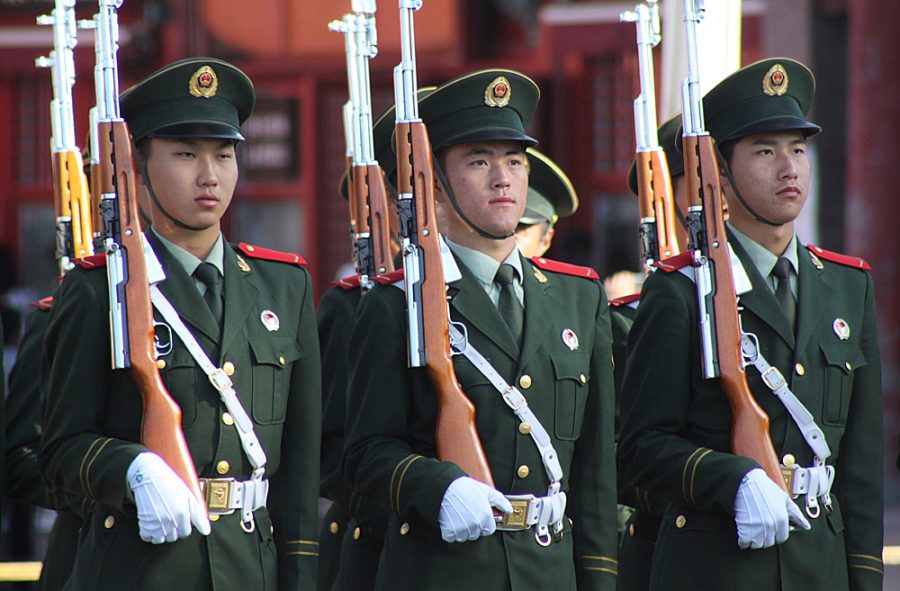What’s Really Behind the Planes in Taiwan
China is not on the verge of war with Taiwan. Though you may have come to believe otherwise after reading last week’s headlines, proclaiming “Brazen China Steadily Ramps Up Warplane Flights in Taiwan’s Airspace” (U.S. News) and “China Flies 52 Military Planes into Taiwanese Airspace in Largest Incursion Ever” (Yahoo News), this notion is all but true.
On October 1, China flew a record 38 Chinese fighter jets over Taiwan’s air defense identification zone, followed by 39 planes on October 2 and 56 planes on October 3. Taiwan has since urged Beijing to stop “irresponsible, provocative actions” after a record total of over 150 Chinese warplanes have entered its air defense zone.
China and Taiwan’s relationship has been fraught with conflict since 1949. The dispute and ambiguity over the meaning of China’s name stems from the Chinese civil war (fought between the communist and nationalist parties). Beginning in 1927, this war concluded with the Communist Party of China declaring itself the “People’s Republic of China” and gaining control over most of Mainland China.
After the fall of the Chinese Nationalist Party, its leader, Chiang Kai-Shek, fled to Taiwan. Following Chiang’s death, his son began a process of democratization, laying the groundwork for Taiwan’s government today. China has since claimed Taiwan as part of its territory, referring to Taiwan as “China’s largest island.”
Despite having no formal agreements with Taiwan, the US pledged to supply Taiwan with defensive weapons, President Joe Biden’s administration stressing that its commitment to Taiwan is “rock solid.” Thus, Taiwan has been used as a way for the US to contend with China.
Beijing has ramped up pressure on Taiwan since the 2016 election of President Tsai Ing-wen, who rejects the “one China” stance promoted by Beijing. Last year, a total of 380 Chinese military jets crossed into Taiwan’s defense zone, whereas the number this year has already exceeded 600 as of early October.
Although China’s continued acts of aggression are indeed provocative, this specific incident has since been blown out of proportion by many news agencies.
For one, there must be a distinction between Taiwan’s Air Defense Identification Zone (ADIZ) and the airspace itself. “Airspace” is a concept of international law that refers to a fixed boundary twelve nautical miles beyond a nation’s border. An ADIZ is an area—usually much farther out from the borders— within which a nation declares it has the authority to identify, track, and control foreign aircraft approaching its territory. Roughly 20 nations have established an ADIZ, and they define its scope differently. The U.S. zone extends 200 miles beyond its borders. Taiwan’s ADIZ covers all of the Taiwan Strait, part of the East China Sea, and a section of Mainland China’s Fujian and Zhejiang provinces – nearly 400 miles away from Taiwanese airspace. Taiwan does not have sovereignty over their ADIZ, and China did not break any international law by flying through it. Specifically, China flew over the Pratas Islands southwest of the Taiwan mainland, over 200 miles away from its airspace – a fact omitted by many ambiguous reports of the China-Taiwan “conflict.”
Furthermore, the Chinese aircrafts crossing Taiwan’s ADIZ did not approach Taiwan territory. Rather, they entered from a southwestern section of the zone, flying away from the country itself. Again, though China’s flights into Taiwan’s ADIZ are unprecedented in nature, they are a far cry from the unbridled aggression portrayed by many news agencies.
China’s incursions this month also coincide with a major Chinese national holiday, a celebration of the founding of the People’s Republic of China. Each year, China flaunts its military power in a heavily televised show of strength. Parades roll through Tiananmen Square and jets fly across Beijing, leaving a wake of multicolored plumes of smoke. It is therefore no surprise that Beijing would order such an incursion into Taiwan’s defense zone with the aim of bolstering “national spirit.”
Although China’s military actions should not be justified in any sense, they must not be blown out of proportion by disingenuous and fear-mongering news outlets either. Considering the distinction between Taiwan’s airspace and ADIZ, the fact that China was flying away from Taiwan, and the timing of such an incursion, it is clear that China’s actions were not as incendiary nor as aggressive as they may seem. The flights over Taiwan comprise but a small act of the grand play, and not a very important one at that.







